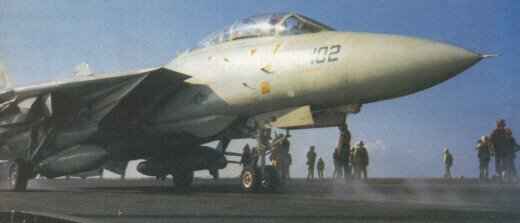Read through the debate posted below regarding the F18-F14 comparisons and it seems obvious that the F14 is superier to the Super Hornet in virtually every way possible.
The next question is if the Navy plans to make up for the loss of the F14's with the F35's will they be a worthy and capable successor?
Some immediate advantages the F35 would have that I could see by just looking at the current posted stats:
- F35 mission radius is ~600 nm versus the F14's at 500 nm
- F35 steath features
- F35 will have far more modern avionics and a more efficent engine
- F14 has two engines F35 only has one (unusual for the navy)
- F35 is a physically smaller aircraft, this is relivent for carrier ops
- F35 is *supposed* to be easier to maintain and operate
- F35 will obviously have newer airframes and have a longer projected lifespan
- F35 (Navy) will have a payload capacity of ~17,000lbs versus the F14 with 13,000lbs.
The next question is if the Navy plans to make up for the loss of the F14's with the F35's will they be a worthy and capable successor?
Some immediate advantages the F35 would have that I could see by just looking at the current posted stats:
- F35 mission radius is ~600 nm versus the F14's at 500 nm
- F35 steath features
- F35 will have far more modern avionics and a more efficent engine
- F14 has two engines F35 only has one (unusual for the navy)
- F35 is a physically smaller aircraft, this is relivent for carrier ops
- F35 is *supposed* to be easier to maintain and operate
- F35 will obviously have newer airframes and have a longer projected lifespan
- F35 (Navy) will have a payload capacity of ~17,000lbs versus the F14 with 13,000lbs.

 , cos a 'Phoenix-less' Mach 1.8 F/A-18 or F-35 would probably run outta "gas" just trying to intercept those enemy fighters.
, cos a 'Phoenix-less' Mach 1.8 F/A-18 or F-35 would probably run outta "gas" just trying to intercept those enemy fighters.


Comment